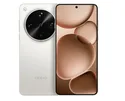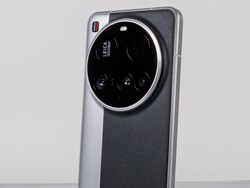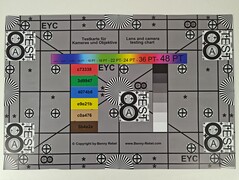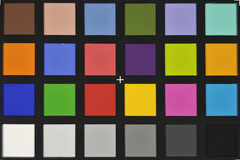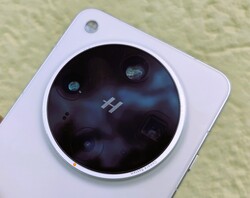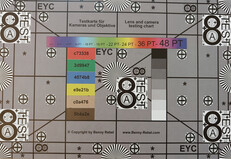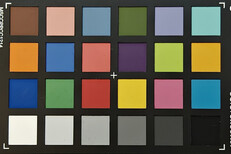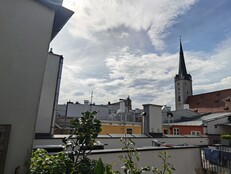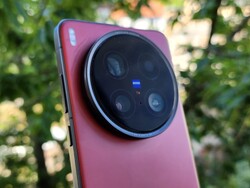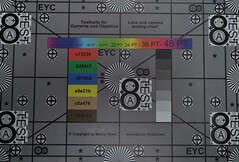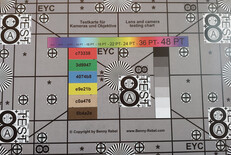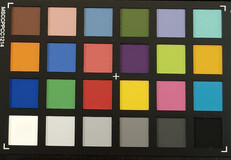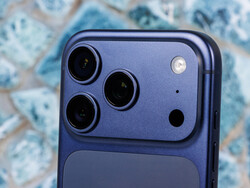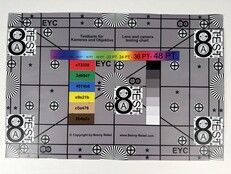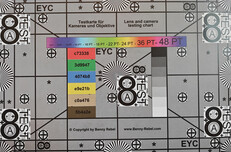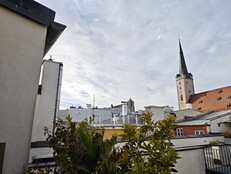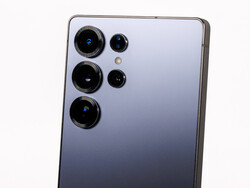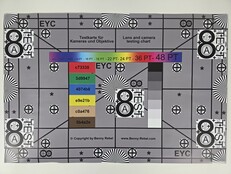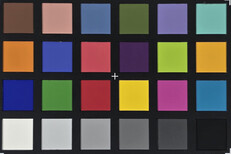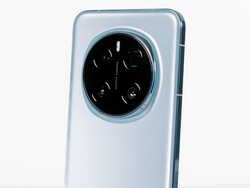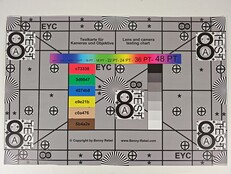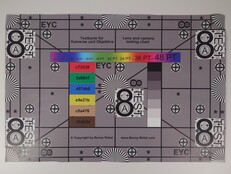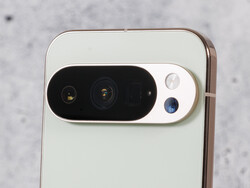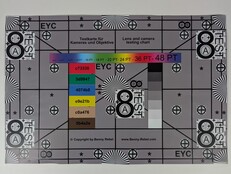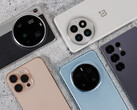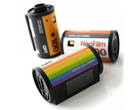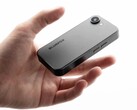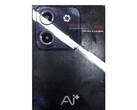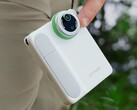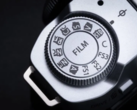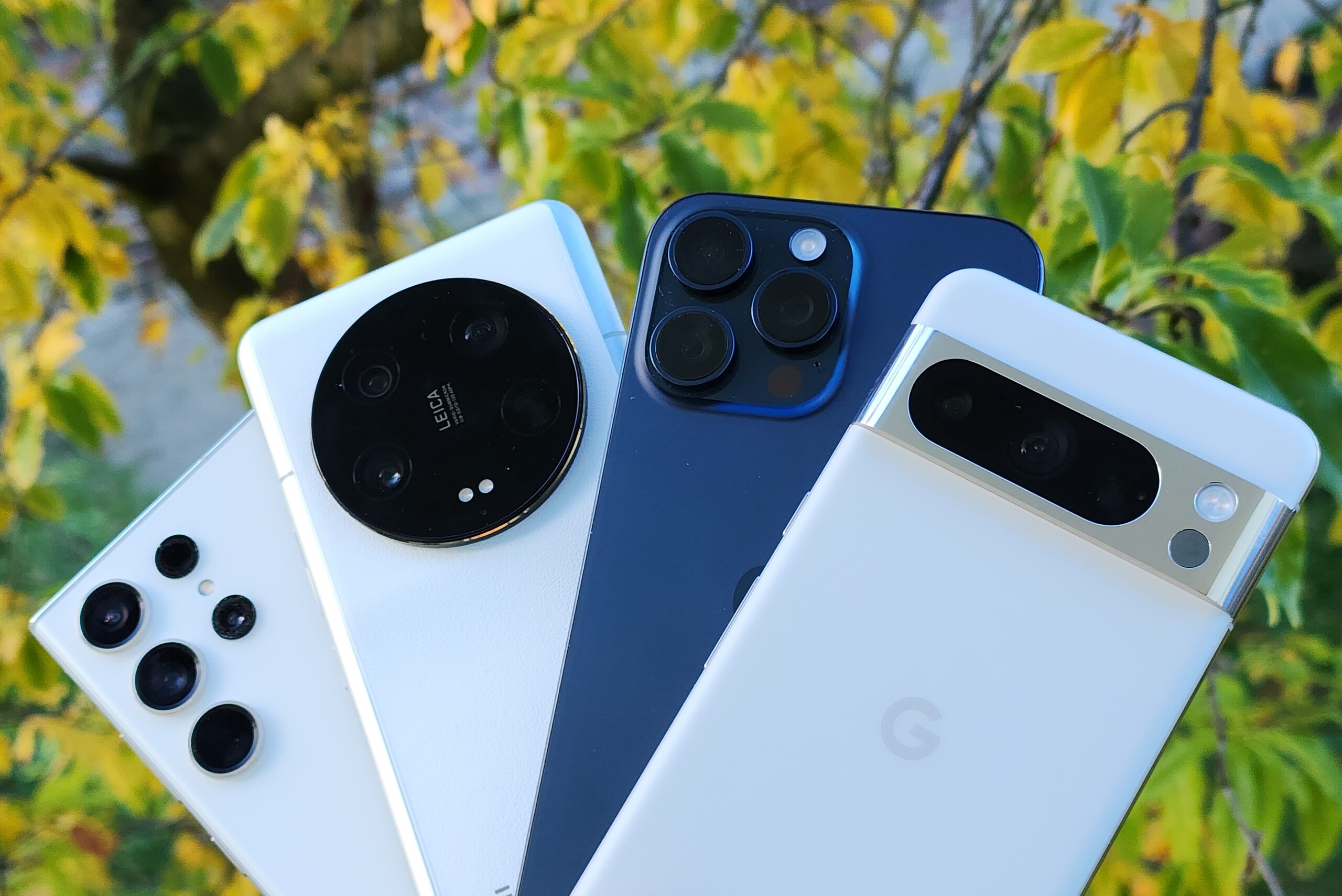
Ranking: Best camera smartphones tested by Notebookcheck
November 2025 update.
Camera features and image quality are central to the modern smartphone experience. Thanks to some very impressive technical advances of recent years, good camera phones make simple dedicated cameras redundant, with intricate behind-the-scenes calculations in the background making sure that even a quick snapshot from the hip always looks good. This article lists the best phones for photography that we have tested recently.Marcus Herbrich (translated by DeepL) Published 🇩🇪 🇳🇱 ...
The days of digital compact cameras are over. The sensors used in smartphones, as well as the lenses and the image processing software, have improved so dramatically that smartphone can now easily replace your average compact camera. The best phones can, anyways. There are still major differences in the image quality that different phones deliver.
Below, we list the top dogs that are bell suited for taking digital pictures, performing particularly well in our extensive testing. At the end of this article, you will also find a large comparison of shots made by these creme-de-la-creme smartphones.
Best camera smartphones to buy in December 2025
Image | Model / Review | Price | Weight | Drive | Display | Camera |
|---|---|---|---|---|---|---|
| Xiaomi 15 Ultra Qualcomm Snapdragon 8 Elite ⎘ Qualcomm Adreno 830 ⎘ 16 GB Memory, 512 GB | Amazon: 1. $11.99 Ibywind for Xiaomi 15 Ultra ... 2. $32.99 INIU Mini Portable Charger, ... 3. $7.99 Lucyliy (3 Pack) Compatible ... List Price: 1499€ | 229 g | 512 GB UFS 4.1 Flash | 6.73" 3200x1440 521 PPI AMOLED | 88.4 % | |
| Oppo Find X8 Ultra Qualcomm Snapdragon 8 Elite ⎘ Qualcomm Adreno 830 ⎘ 16 GB Memory, 512 GB | Amazon: 1. $6.96 Kepuch Screen Protector Comp... 2. $10.42 [1-Pack] for Oppo Find X8 Ul... 3. $15.99 AKABEILA [3 Pack Privacy Scr... List Price: 1050€ | 226 g | 512 GB UFS 4.1 Flash | 6.82" 3168x1440 510 PPI AMOLED | 88.1 % | |
| Vivo X200 Ultra Qualcomm Snapdragon 8 Elite ⎘ Qualcomm Adreno 830 ⎘ 16 GB Memory, 1024 GB | Amazon: 1. $49.07 NEEWER X200 Ultra Phone Cage... 2. $15.99 AKABEILA [3 Pack Privacy Scr... 3. $7.99 Lucyliy (3 Pack) Compatible ... List Price: 890€ | 229 g | 1 TB UFS 4.0 Flash | 6.82" 3168x1440 510 PPI AMOLED | 87.8 % | |
| Oppo Find X9 Pro MediaTek Dimensity 9500 ⎘ Arm Mali G1- Ultra MC12 ⎘ 16 GB Memory, 512 GB | Amazon: 1. $7.99 Lucyliy (3 Pack) Compatible ... 2. $7.82 KJYFOANI For Oppo Find X9 Pr... 3. $17.45 RJTSLDOV For OPPO Find X9 Pr... List Price: 1299€ | 224 g | 512 GB UFS 4.1 Flash | 6.78" 2772x1272 450 PPI LTPO AMOLED | 87.7 % | |
| Apple iPhone 17 Pro Apple A19 Pro ⎘ Apple A19 Pro 6-Core GPU ⎘ 12 GB Memory, 512 GB SSD | Amazon: 1. $39.99 Apple iPhone 17 Pro Silicone... 2. $49.00 Apple iPhone 17 Pro Silicone... 3. $8.98 Ailun 3 Pack Screen Protecto... List Price: 1549€ | 206 g | Apple 512GB NVMe | 6.30" 2622x1206 458 PPI OLED | 87.4 % | |
| Xiaomi 17 Pro Max Qualcomm Snapdragon 8 Elite Gen 5 ⎘ Qualcomm Adreno 840 ⎘ 16 GB Memory, 1024 GB | Amazon: 1. $8.19 Anoowkoa 3 Pack Glass Screen... 2. $13.59 iPhone 17 Pro Max Charger Fa... 3. $9.90 Anbzsign 2+1 Pack for Xiaomi... List Price: 940€ | 219 g | 1TB UFS 4.1 Flash | 6.90" 2608x1200 416 PPI AMOLED | 87 % | |
| Samsung Galaxy S25 Ultra Qualcomm Snapdragon 8 Elite for Galaxy ⎘ Qualcomm Adreno 830 ⎘ 12 GB Memory, 256 GB | Amazon: 1. Samsung Galaxy S25 Ultra, 25... 2. $1,089.99 SAMSUNG Galaxy S25 Ultra SM-... 3. $929.00 Samsung Galaxy S25 Ultra 5G ... List Price: 1449€ | 218 g | 256 GB UFS 4.0 Flash | 6.90" 3120x1440 498 PPI Dynamic AMOLED 2X | 86.9 % | |
| Honor Magic7 Pro Qualcomm Snapdragon 8 Elite ⎘ Qualcomm Adreno 830 ⎘ 12 GB Memory, 512 GB | Amazon: 1. $11.99 Ibywind for Honor Magic7 Pro... 2. $9.99 Acoweous 2 Pack Screen Prote... 3. $16.88 teroxa Honor Magic 7 Pro Cas... List Price: 1300€ | 223 g | 512 GB UFS 4.0 Flash | 6.80" 2800x1280 453 PPI OLED | 86.6 % | |
| Sony Xperia 1 VII Qualcomm Snapdragon 8 Elite ⎘ Qualcomm Adreno 830 ⎘ 12 GB Memory, 256 GB | Amazon: 1. $11.99 Ibywind For Sony Xperia 1 VI... 2. $5.99 Supershieldz (2 Pack) Design... 3. $6.45 Anoowkoa 2 Pack for Sony Xpe... List Price: 1499€ | 197 g | 256 GB UFS 4.0 Flash | 6.50" 2340x1080 396 PPI OLED | 86.5 % | |
| Google Pixel 10 Pro Google Tensor G5 ⎘ IMG DXT-48-1536 ⎘ 16 GB Memory, 256 GB | Amazon: $899.00 List Price: 1199€ | 207 g | 256 GB UFS 4.0 Flash | 6.30" 2856x1280 497 PPI OLED | 86.4 % |
The table above lists the best camera smartphones tested by Notebookcheck in the last 12 months as well as other products that are relevant and still available. If several products have the same rating, the newer one will be listed higher. The prices shown are automatically updated daily and may change over time.
Link: all tested products in this class
Editorial comment
As this month's newcomers, we welcome the Pixel 10 Pro, Xiaomi 17 Pro Max, Oppo Find X9 Pro and Apple iPhone 17 Pro to the list of the best camera smartphones. For this to happen, the Apple iPhone 16 Pro, Oppo Find X8 Pro and the two Vivo phones, the X200 Pro and X200 Pro Mini, had to leave. All are still worth a closer look for those in need of a good camera phone.
You can find the latest camera smartphone performance comparisons here, here as well as here.
1st place - Xiaomi 15 Ultra
The 15 Ultra has everything a flagship smartphone needs to have: High performance, an appealing enough visual design and an extra-bright display, as well as long battery life - and, naturally, a very good photo quality.
Thanks to its numerous Leica-branded cameras, the 15 Ultra delivers the best photo quality, offering a lot of flexibility to mobile photography enthusiasts.
The key feature of the 15 Ultra is its main camera array with four Leica Summilux lenses, including a 1-inch Sony sensor. This results in more than impressive shots no matter the lighting circumstances. The well-designed main camera really comes into its own in low light situations. Zooming is possible with two lenses, the 3x zoom (50 MP) and the 4.3x zoom (200 MP) one. This telephoto setup delivered very good results in Notebookcheck's testing. The 50 MP ultra-wide-angle sensor performs well, too. It also serves as a macro lens.
If needs be, you can turn the Xiaomi 15 Ultra into an even better camera phone with the Photography Set. With this special camera case, the phone gains an optional 67 mm filter, an additional 2,000 mAh battery and configurable buttons.
In Germany, the Xiaomi 15 Ultra is available from Amazon Deutschland and MediaMarkt, among other options, starting from ~1,500 euros.
2nd place - Oppo Find X8 Ultra
On paper, the Hasselblad camera setup of the Find X8 Ultra is very similar to what the Pro model has. However, the four 50 MP sensors on the back are significantly larger, with the exception of the ultra-wide-angle one. The primary camera with its huge 1-inch sensor produced very good photos with natural bokeh in our testing. The Oppo phone also performs really well in low light scenarios, with a lot of ambient light and textures that are preserved well.
Its two telephoto cameras with OIS and 3x and 6x lossless zoom also have very large sensors (1/1.56" and 1/1.95"), as far as periscope lens go, producing great photos thanks to native magnification - up to 10x is possible.
With its Find X8 Ultra, Oppo has climbed the camera Olympus for the year 2025. Things don't get much better than this.
This phone's close relative, the X8 Ultra is no slouch, either. It's one of the best smartphones overall (no focus on cameras). Highlights of the flagship phone include its strong battery life and high performance with comparatively little SoC throttling, as well as a very bright OLED display.
At Trading Shenzhen, prices for the Oppo Find X8 Ultra start at around 950 euros depending on the configuration.
3rd place - Vivo X200 Ultra
The X200 Ultra has a very balanced camera setup with similarly sized image sensors. Optical stabilization and a 4K120 video recording option are available. The Vivo flagship aims to please photographers with its 35 mm lens, a 14 mm ultra-wide-angle lens (1/1.28-inch Sony LYT-818), as well as a 200-MP telephoto camera. Naturally, the X200 Ultra delivers very good photo quality in every discipline, and extremely good HDR.
Vivo's X200 Ultra is one of, if not the best all-rounder for mobile photography lovers.
Apart from the Zeiss-branded camera system, the Vivo X200 Ultra is equipped with high-end hardware - a very bright LTPO display with a high pixel density of 510 PPI, a 3D ultrasonic sensor and the Qualcomm Snapdragon 8 Elite.
Provided one is fine with ordering their phone from overseas, prices for the Vivo X200 Ultra start at around 870 euros.
4th place - Oppo Find X9 Pro
Oppo's Find X9 Pro sets the bar high. The successor to the mighty Find X8 Pro does many things even better. The new LUMO image processing in particular has great potential.
The Find X9 Pro delivers strong photo quality and smart camera software.
Thanks in part to the new 50-MP primary sensor, the camera hardware found on the Find's back (pun intended) is interesting to talk about. The camera setup comes with Hasselblad branding in tow. A large stacked sensor from Sony is designed to cover a particularly wide dynamic range thanks to Hybrid Frame HDR, and the results delivered seem very good in daylight with dynamic range really being nothing short of first-class. For zoom photos, a new 200-MP lens was installed, which allows triple optical magnification and captures many details in daylight.
The cooperation with Hasselblad provides the Find X9 Pro with some familiar features, such as the XPan mode or the Hasselblad Master mode (16-bit RAW capture).
The X9 Pro is available in Europe at an RRP of 1,299 euros. If you want it cheaper, you can also buy the Chinese version starting from around 750 euros here (a language pack is pre-installed).
5th place - Apple iPhone 17 Pro
The iPhone 17 Pro relies on three 48-MP sensors, which means that zoom shots in particular benefit quite a bit compared to what the previous-gen model offered. The telephoto lens now has a 4x optical zoom and optical image stabilization with 3D sensor shift.
The primary sensor produced good and balanced photos in our testing, too, which impress with detail. Little has changed for the ultra-wide-angle lens as compared to the iPhone 16 Pro, though.
Photo fans will get their money's worth with the iPhone 17 Pro.
Cameras aside, the 17 Pro is a strong high-end phone albeit one without any real innovation baked in. It does have an improved OLED display, and its A19 Pro chip ensures outstanding system performance for years to come.
The iPhone 17 Pro can be purchased in all color and memory variants directly from Apple USA. Naturally, one can also purchase the model from all major retailers and e-commerce platofrms; examples for Germany include Notebooksbilliger, MediaMarkt and Amazon.de.
6th place - Xiaomi 17 Pro Max
Xiaomi's 17 Pro Max has all the features that most customers interested in a flagship phone could possibly desire. Its huge battery ensures extremely good runtimes and thanks to the second display on the back, the Xiaomi phone is the perfect companion for selfie fans and vloggers.
Ingeniously enough, thanks to the second OLED display, the rear cameras of the Xiaomi 17 Pro Max can also be used for selfies.
The rear camera system was developed in cooperation with Leica, with the Light Hunter 950L sensor serving as the primary sensor. Photos look very detailed, with excellent dynamic range and a lot of detail even in complex conditions. All cameras on the Xiaomi 17 Pro Max have a resolution of 50 megapixels, including the ultra-wide-angle and telephoto lens. The sensors chosen deliver solid results.
The Xiaomi 17 Pro Max is not officially sold in Europe as of this writing but can be had from Asia-based e-commerce platforms such as TradingShenzhen, the company that offered us the review unit, starting from approximately 890 euros.
7th place - Samsung Galaxy S25 Ultra
The S25 Ultra comes with four lenses, with the main sensor sporting a resolution of 200 MP. The photos produced are downscaled to 12 MP by default, with 24 MP and 50 MP as well as the full original resolution also available as options. Photo quality left us impressed, both in daylight and in low-light environments. In particular, the Galaxy's ultra-wide-angle lens is impressive; this is now built around Samsung's 50-MP GN3 sensor.
The dedicated telephoto lenses deliver good quality 3x and 5x optical magnification with extremely good stabilization.
Thanks to its high-resolution 200-MP main sensor accompanied by powerful secondary lenses, the Galaxy S25 Ultra is one of the best camera phones on the market.
The extremely powerful Snapdragon 8 Elite for Galaxy used here, along with comprehensive AI features, an update promise of seven years and anti-reflective display coating, let the Samsung flagship offer an almost unrivaled experience.
The Galaxy is available for an RRP of 1,449 euros in Germany. MediaMarkt and Amazon Germany are but two options for those interested in acquiring one.
8th place - Honor Magic7 Pro
In addition to good cameras, the Magic7 Pro impressed us with its great performance and long battery life. The Honor flagship is also currently the only Android smartphone available with 3D face recognition.
Honor's Magic7 Pro is a very solid overall smartphone with nice cameras - especially for taking photos of distant objects.
The Super Dynamic Falcon main camera is a 50 MP sensor paird to variable aperture optics (F/1.4 to F/2.0), delivering good to very good results in our testing in all lighting conditions. The improved zoom lens has 200 MP and, thanks to the sensor's high resolution, can enlarge objects by 6x almost loss-free. The ultra-wide-angle lens with 50 MP and a good depth of field also serves as the macro lens of the Honor flagship.
The Magic is available directly from Honor as well as from retailers such as MediaMarkt from an RRP of 1,300 euros in Germany.
9th place - Sony Xperia 1 VII
The Xperia 1 VII relies on a Zeiss triple camera setup with a focal length range of 16 to 170 millimeters. The 48-MP primary camera takes really good photos and benefits from very extensive setting and optimization options. Together with the telephoto lens with variable 3.5x to 7.1x zoom, and a 48-MP ultra-wide-angle camera, photo fans are sure to see their wishes come true with the Sony flagship.
Sony's Xperia 1 VII is easy to configure and fine-tune down to the smallest detail to take excellent photos.
This Xperia model is not only an interesting choice for content creators and photo enthusiasts; it's a top-level smartphone overall, too. With its Snapdragon 8 Elite, long battery life and an extra-bright 120-Hz OLED screen, it truly is one of the best smartphones on the market.
The Sony Xperia 1 VII is available from Sony.de for an RRP of around 1,500 euros. It is also available from other online retailers at the time of testing, for example, Amazon.de.
10th place - Google Pixel 10 Pro
The Pixel 10 Pro's cameras offer a resolution of 50 MP and 48 MP; only the primary lens and the telephoto lens are blessed with optical image stabilization. The phone's imaging performance is very good. Magnification-wise, when going over 30x, the Pro Resolution Zoom feature is activated, which uses AI to analyze and improve the image. Another new feature is the camera coach, designed to help you get the best out of your photos.
The Pixel 10 Pro combines powerful cameras with intelligent software.
In our testing, the Pixel 10 Pro proved to be a high-quality, compact flagship smartphone with a particular focus on software and AI functions.
The Pixel 10 Pro is available directly from Google but is also available from all major retailers; for Germany, that's MediaMarkt and Amazon.de, and more.
The best camera phones: Sample shot comparisons
Samsung Galaxy S24 Ultra vs. Oppo Find X7 Ultra vs. Xiaomi 14 Ultra vs. Honor Magic6 Pro
Apple iPhone 15 Pro Max vs. Samsung Galaxy S23 Ultra vs. Google Pixel 8 Pro vs. Xiaomi 13 Pro
Apple iPhone 14 Pro Max vs. Samsung Galaxy S23 Ultra vs. Google Pixel 7 Pro vs. Xiaomi 13 Pro (copy 1)
Apple iPhone 14 Pro Max vs. Samsung Galaxy S23 Ultra vs. Google Pixel 7 Pro vs. Xiaomi 13 Pro
Older camera phones comparisons
Apple iPhone 14 Pro Max vs. Samsung Galaxy S22 Ultra vs. Google Pixel 7 Pro vs. Vivo X80 Pro
Huawei P50 Pro vs Apple iPhone 13 Pro vs Google Pixel 6
Image comparison
Choose a scene and navigate within the first image. One click changes the position on touchscreens. One click on the zoomed-in image opens the original in a new window. The first image shows the scaled photograph of the test device.
HauptkameraHauptkameraUltraweitwinkel5-facher ZoomLow-LightGoogle Pixel 6 Pro vs Samsing Galaxy S22+ vs Xiaomi 12 Pro
Image comparison
Choose a scene and navigate within the first image. One click changes the position on touchscreens. One click on the zoomed-in image opens the original in a new window. The first image shows the scaled photograph of the test device.
HauptkameraHauptkameraUltraweitwinkel5-facher ZoomLow-LightXiaomi 12S Ultra vs Apple iPhone 13 vs OnePlus 10 Pro
Image comparison
Choose a scene and navigate within the first image. One click changes the position on touchscreens. One click on the zoomed-in image opens the original in a new window. The first image shows the scaled photograph of the test device.
HauptkameraHauptkameraLow LightUltraweitwinkelApple iPhone 14 Pro vs Oppo Find X5 Pro vs Honor Magic4 Pro
Image comparison
Choose a scene and navigate within the first image. One click changes the position on touchscreens. One click on the zoomed-in image opens the original in a new window. The first image shows the scaled photograph of the test device.
HauptkameraHauptkameraUltraweitwinkel5-facher ZoomLow-LightSamsung Galaxy S22 Ultra vs Oppo Find X5 Pro vs Apple iPhone 13 Pro
Image comparison
Choose a scene and navigate within the first image. One click changes the position on touchscreens. One click on the zoomed-in image opens the original in a new window. The first image shows the scaled photograph of the test device.
HauptkameraHauptkameraUltraweitwinkel5-facher ZoomLow-LightHuawei Mate Xs 2 vs Sony Xperia 1 IV vs Honor Magic4 Pro
Image comparison
Choose a scene and navigate within the first image. One click changes the position on touchscreens. One click on the zoomed-in image opens the original in a new window. The first image shows the scaled photograph of the test device.
HauptkameraHauptkameraUltraweitwinkel5-facher ZoomLow-LightOppo Find X5 Pro vs Apple iPhone 13 Pro vs Samsung Galaxy S22 Ultra
Image comparison
Choose a scene and navigate within the first image. One click changes the position on touchscreens. One click on the zoomed-in image opens the original in a new window. The first image shows the scaled photograph of the test device.
HauptkameraHauptkameraUltraweitwinkel5-facher ZoomLow-LightVivo X80 Pro vs Apple iPhone 13 Pro vs Xiaomi 12 Pro
Image comparison
Choose a scene and navigate within the first image. One click changes the position on touchscreens. One click on the zoomed-in image opens the original in a new window. The first image shows the scaled photograph of the test device.
HauptkameraHauptkameraUltraweitwinkel5-facher ZoomLow-LightApple iPhone 14 vs Apple iPhone 13 vs Honor Magic4 Pro
Image comparison
Choose a scene and navigate within the first image. One click changes the position on touchscreens. One click on the zoomed-in image opens the original in a new window. The first image shows the scaled photograph of the test device.
Tageslicht-Aufnahme 1Tageslicht-Aufnahme 2UltraweitwinkelLowlight-AufnahmeSamsung Galaxy S22+ vs Google Pixel 6 Pro vs Xiaomi 12 Pro
Image comparison
Choose a scene and navigate within the first image. One click changes the position on touchscreens. One click on the zoomed-in image opens the original in a new window. The first image shows the scaled photograph of the test device.
Tageslicht-Aufnahme 1Tageslicht-Aufnahme 25-facher ZoomUltraweitwinkelLowlight-Aufnahme




